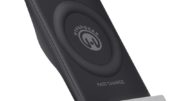It’s the answer to your problems. OK, that may be overstating things a little bit, but it’s certainly the answer to the problem of poor reception in the home or office. Here in the 21st century, we have become so accustomed to always-on contact with the outside world that we feel naked and alone when we don’t have a cell signal. It’s a real ailment called “nomophobia” believe it or not. The easy answer to the problem of nomophobia is just to make sure you’re never without a cell signal, even when you’re indoors.
Why is it hard to get a cell signal indoors?
At some point in time you’ve heard that radio waves pass through walls. It’s true; things that look solid to us in visible light are almost invisible to most radio frequencies, including the ones used for cellular service. The key there is “almost.” Walls do tend to cut the signal strength down by about half. There’s also the problem of what’s in the walls. Copper wiring and flex conduit will stop cell signals. Bricks made with a lot of iron ore and the metal mesh used for stucco can also limit cell signals and stop them from getting into the home. The construction industry hasn’t really concentrated on making building materials that are cell-friendly, so this is going to be a problem for a long while.
How does a cell booster solve this problem?
The basic idea of a cell booster is that it pulls in signal from where it’s strong and redistributes it where it’s weak. This can mean putting an antenna up high on the roof where it gets great cell service, or just putting an antenna on the inside of a window. It all depends on how weak your cell service is. If you get good reception by a window but not in the rest of the house, a window antenna may be all you need. On the other hand if you really only get one bar at best while standing outside, putting a large antenna up high on the roof is going to be your best bet.
A cable runs from that antenna, whether it’s indoors or outdoors, and it goes into an amplifier which sends it out. Amplifier units can look like Wi-Fi routers or can look a lot more industrial, but they always connect to the large receiving antenna as well as a small indoor antenna that’s used to distribute the signal. In larger installations this indoor antenna can be put where it’s most needed, or multiple antennas can be used to cover a larger area.
By the way, a cell booster also works in reverse. It can help your phone’s signal get to the towers just like it helps the tower’s signal get to your phone.
Is a cell booster safe and legal?
Cellular boosters are recognized by the FCC and all major cell carriers. They put out more signal than an average cell phone but not as much as some microwave ovens or televisions. It’s considered completely safe to operate, although FCC rules do require that you register with your carrier.
Just as importantly, a cell booster is safe to operate within your cell network. Each cellular booster contains complex circuitry. That circuitry tests the quality of the signal many times a second. It makes sure that the amplified signal provided by the booster isn’t feeding back to the cell tower. Such feedback could actually spread and take down the cell network. Lu not going to happen because your booster will automatically reduce power to avoid this sort of thing. The booster continuously adjusts the power level. That way you’re getting the strongest signal possible without feedback. This is called auto gain control and it’s a feature of all consumer cell boosters.
Do cell boosters actually work?
Yes, I know. You bought a sticker to put on the back of your phone years ago. You thought it would increase signal, and it did nothing. This is another whole animal – this is a complex amplifier system that absolutely does work. The key here is that you need to get a system that’s best for your environment. Most manufacturers will suggest an area that the booster will cover. There’s no guarantee that it will cover that whole area, though. If there are several walls and a lot of wiring in place, range can be reduced. That’s why it’s important to get the booster that’s right for your size space or even go one level up. Then, put the indoor antenna right in the center of the area you want amplified for the best possible results.
I can tell you that a cell booster makes a huge difference in my home. I live in a traditional stucco home and the signal level inside is awful. A booster takes me from essentially zero bars to five bars in most of the house.
Does a cell booster interfere with Wi-Fi or other radio reception?
There’s no reason that a cell booster should interfere with Wi-Fi. Just make sure the booster is even a few feet away from your router. The two devices use completely different frequencies so it isn’t a problem.
When you’re ready to shop for a cell booster, our team of professionals can help you find the right one with our free recommendation service. We’ll help you get what you need!





